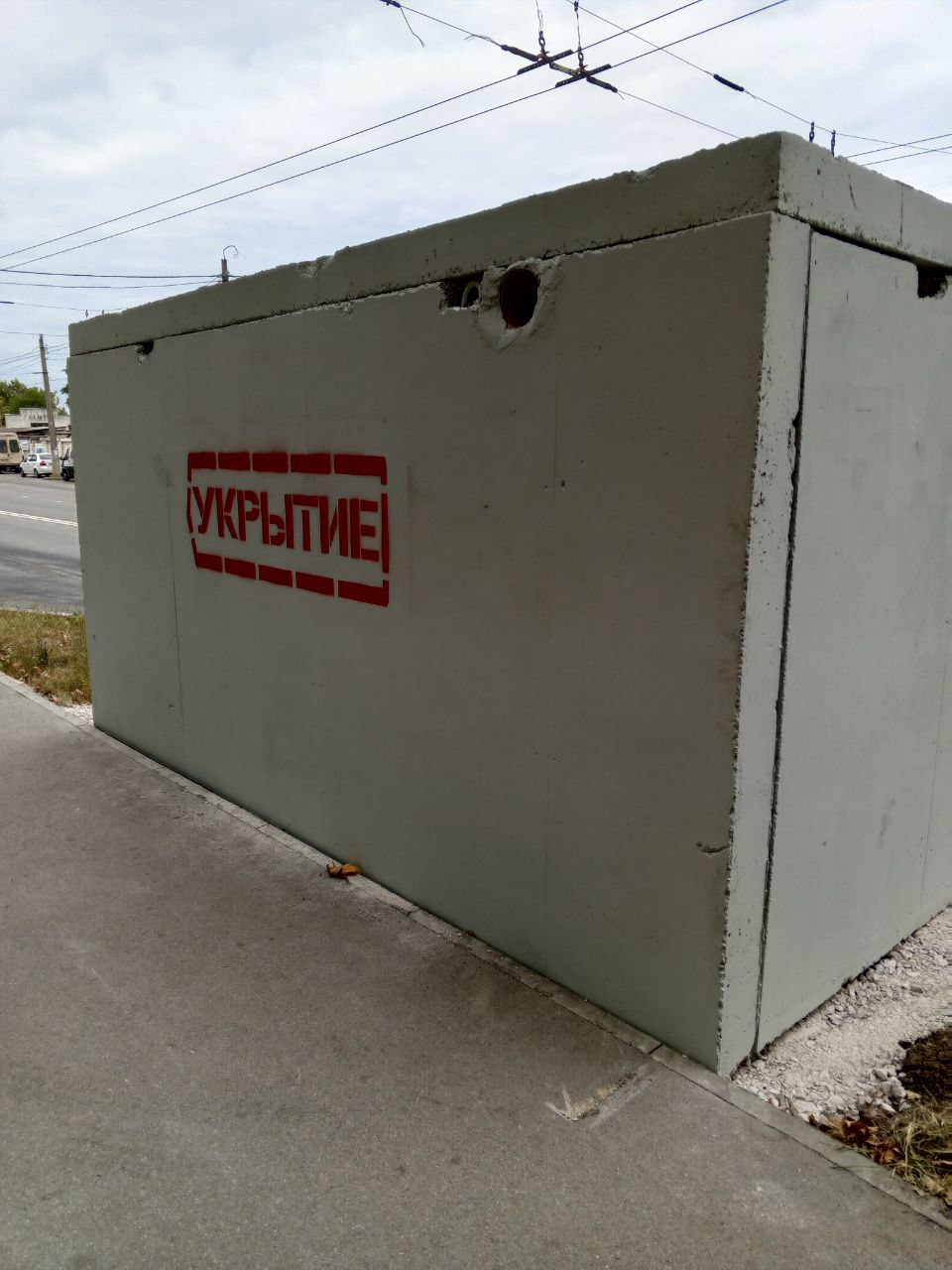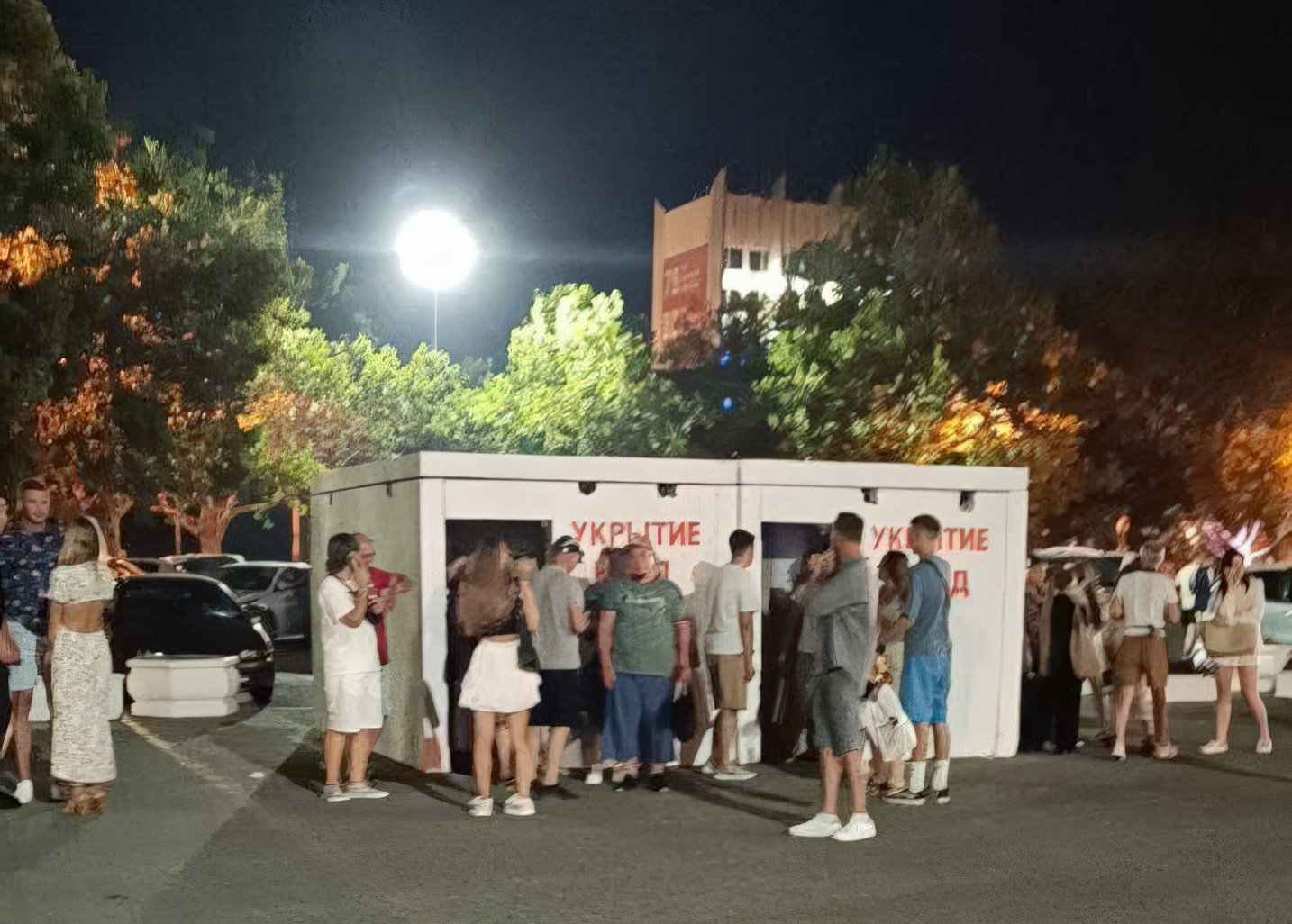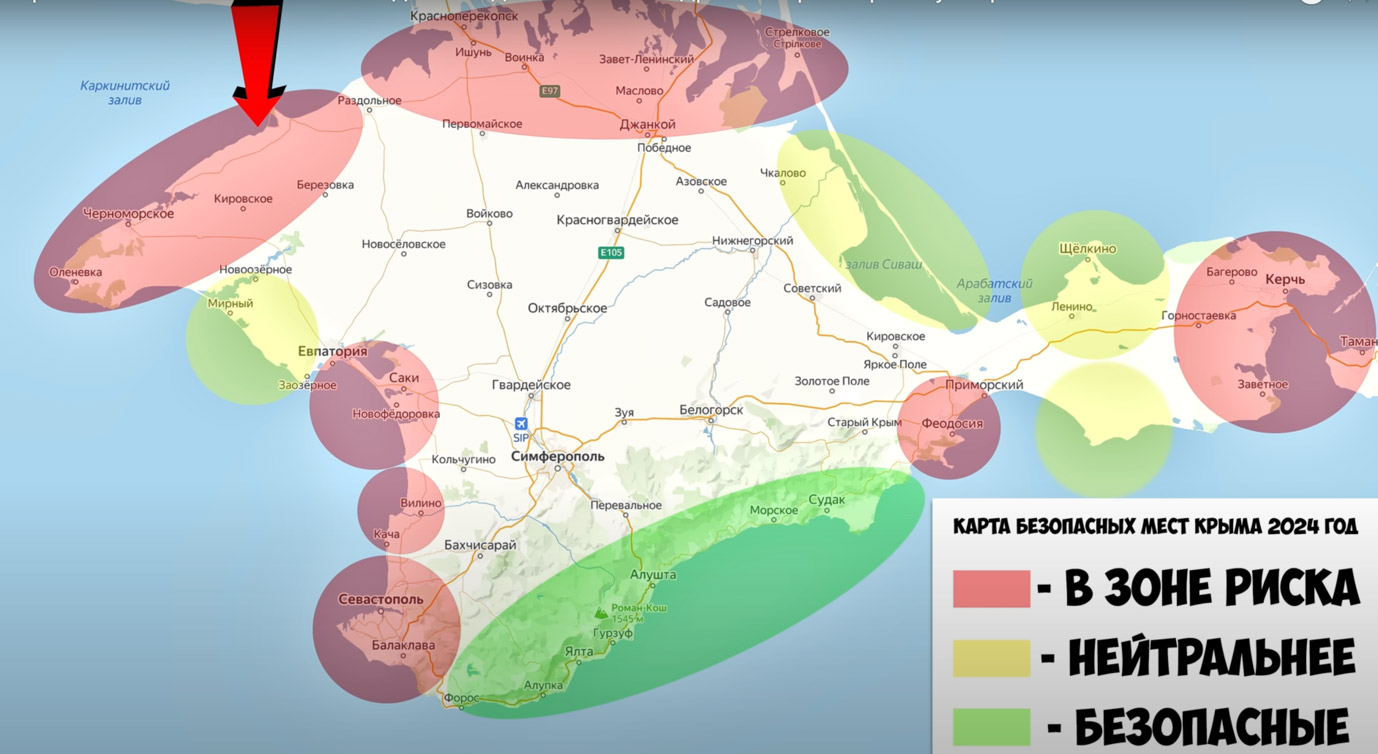"Survived by some miracle", or the results of the tourist season in Crimea
The tourist season in Crimea is coming to an end, and the occupation authorities have already rushed to report an unprecedented increase in the flow of vacationers compared to last year. However, local residents and representatives of the tourism sector are not as optimistic when summing up the results of the season.
"There were tourists, and the season didn’t collapse—that's a fact. There were slightly more people than last year, which is also true. But then there are many nuances that local authorities don’t want to speak about openly.
Firstly, the growth in tourists was only in comparison to last year, which was the worst. If we’re talking about the seasons from 2016-2021, this summer was catastrophically bad. Secondly, the increase in tourists was solely in the budget segment, which became even cheaper this year. Thirdly, there was a noticeable increase in vacationers who traveled using free or subsidized vouchers. All these nuances outweigh the small increase in tourist numbers that the authorities are talking about. You can't sustain the tourism sector with just the number of tourists", - said Mykhailo, the director of one of Crimea’s travel agencies, in an interview with OstroV.
The vice president of the russian Association of Tour Operators, Sergey Romashkin, believes that Crimea showed an "outstanding, but not record-breaking" result during the 2024 summer season.
"We are extremely pleased with this season. Crimea was one of the most popular destinations on the Black Sea coast. Overall, the tourist flow increased by about 30-35%", - russian media quote him as saying.
He also mentioned that the number of trips to Crimea through the "new regions" is growing, a claim echoed by the region’s occupation authorities.
"If last year this route was just starting to be used by tourists, this year about 7-8% of vacationers traveling by car came through Melitopol and Dzhankoi. As a result, the load on the Crimean Bridge has decreased", - noted Sergey Romashkin.
The so-called head of Crimea, Sergey Aksyonov, cites even higher numbers, claiming that 11% of tourists arrived on the peninsula through the occupied regions (the Donetsk, Kherson, and Zaporizhzhia oblasts).
According to a Crimean real estate agent, the number of tourists traveling through the "new regions" is indeed growing, the reason being long queues at the Crimean Bridge.
"And who wants to stand for hours in the heat during the summer in a queue at the bridge, which is constantly closed due to air raid alerts? Plus, there's a thorough inspection of the car and all belongings. Entrance to the Crimean Bridge is now guarded like the Kremlin—we joke about it here—and not everyone likes that. That's why more people are taking the risk and going through the war zone. Additionally, many are influenced by information from Ukrainian media that the Crimean Bridge will soon be attacked and destroyed, so they choose the only alternative route", - she told OstroV.
As for the constant alerts and drone attacks on the peninsula, both tourists and Crimeans have mostly gotten used to and adapted to them, according to locals.
"Everyone is waiting either for a suspension of military actions or a sharp escalation, including an attack on the Crimean Bridge and Sevastopol. This summer was somehow calmer compared to the previous one, so there were more tourists, but not everywhere", - said Crimean realtor Serhiy.
Reassuring statistics
According to the occupation authorities, from January to September 2024, the tourist flow to Crimea amounted to over 5.2 million people, which is 20% higher than the same period in 2023. This was stated by the so-called head of the region, Sergey Aksyonov.
"In reality, Alushta, Yalta, and Yevpatoria: now they're saying there are a lot of people, it’s physically noticeable. However, of course, the tourist flow will still be less than in peacetime, regardless. It's understandable, the weather helps, but the informational policy of our opponents has a partial impact. Unfortunately, logistics also has its issues—sometimes there are traffic jams on the bridge during missile alerts, unfortunately, on our side", - said Aksyonov in mid-July.
He also clarified that about 65% of tourists arrive by car and bus via the Crimean Bridge, more than 24% by train, and around 11% through the occupied regions of Ukraine.
"The season is slightly more active than last year. According to statistics, we already have 35% more vacationers than last year. Health resorts are relieved because they were worried about how the resort season would go. The occupancy rate of health resorts is between 55% and 60% on overage. On the weekends, many hotels are nearly 100% booked because Crimeans are coming", - stated the "head" of Alushta, Galina Ogneva, in mid-July.
At the same time, the average occupancy rate of accommodations (hotels, sanatoriums) supposedly increased by 23% (compared to last year) and was 60.7% in June-August, and about 50% in September (last year's average occupancy was around 40%).
"The occupancy rate of hotels and sanatoriums has indeed risen by about 15-20% compared to last year. This is evident from the number of bookings through our travel agency network. Why are people going to Crimea? They’ve simply gotten used to the idea that things aren't going to get any better or safer. Based on our observations, the main factor was that it hasn't gotten worse (in terms of safety). The attack on the beach in Sevastopol at the beginning of summer was quickly forgotten; it wasn’t heavily emphasized, and there haven't been any major attacks since, only on military targets outside tourist areas and cities. Some postponed their trips last year and now decided to go with the mindset of ‘you only live once’, and we’ve heard that too", - said Mykhailo, the director of a Crimean travel agency, to OstroV.
According to another representative of Crimea's tourism industry, Ivan, the increase in tourist numbers is primarily related to pricing. Prices for vacations remained unchanged compared to last year, which is something only Crimean resorts can boast.
"Sochi, Anapa, Gelendzhik, and other resorts have been rapidly raising prices for vacations for the third year in a row. People have stopped traveling abroad, but they still need to vacation somewhere. Major russian resorts raised their prices by 20-30% this year, and even so, they are fully booked. Crimea isn’t seeing mass tourism due to safety concerns, so they can’t raise prices. However, considering inflation, that would have been a logical step. A standard 3-star hotel in Sochi at the height of the season cost around 15-20 thousand rubles, while in Yalta, it was 5-7 thousand. Such a gap has never been seen before", - he explained in a comment to OstroV.
Russian experts are also saying the same. According to Alexander Mkrtchyan, general director of the "Pink Elephant" travel agency network, Crimea began to recover its tourist flow after two years of decline due to the attractive vacation prices compared to other Black Sea regions.
"Crimean hoteliers managed to maintain last year's prices. And if anyone raised them, it was the 4-5 star hotels. If we see a price increase in Sochi by 20%, and last year it was 30% higher than the year before, then in Crimea, it’s only 10-11%. Some properties have kept their rates at 5,000 rubles per night, despite inflation and rising wages. I know of such hotels in Sudak, Feodosia, and Yevpatoria", - said the expert.
Moreover, he noted that Crimea's appeal to tourists was further boosted by the "local authorities’" decision not to introduce a resort tax this year.
Oksana Bulakh, the commercial director of the company "Alean", also reported that Crimean hotels did not raise prices for this summer, with many offering promotions and discounts.
"The average price increase for the summer season in Crimea does not exceed 12%. Last year, many establishments maintained their 2022 prices. Medium and small hotels regularly offer promotions, such as weekend stay deals, thereby increasing their occupancy and attracting tourists from neighboring regions. For comparison, the average increase in accommodation costs in the Krasnodar Krai this year was 20%", - she said.
Sergey Romashkin, vice president of the Association of Tour Operators of russia, noted several reasons why tourists returned to Crimea during the summer season of 2024. One of them is economic.
"The cost of the trip is a very important factor. Crimea was 10% cheaper than the Krasnodar Krai all summer. For example, Anapa sharply raised prices by around 20%, while in Crimea, compared to 2023, prices increased by a maximum of 7-8%", - he believes.
According to him, some tourists who wanted to save money had the opportunity to vacation on the peninsula for 10 days as a family for 15,000 rubles less than on the mainland.
While the relatively low prices for tourists are a clear advantage, the local residents—many of whom live off the summer season year-round—are desperate as they lose income.
"Our taxes and utility bills are rising, food prices are like those in moscow and St. Petersburg, gasoline here is the most expensive in all of russia, and now our only business is just slowly dying. We are horrified by the prices we are forced to set. My mini-hotel in Yevpatoria is struggling right now, with room prices around 3,000 rubles, and even then, not all rooms are filled. We were offered cooperation for mass bookings from budget travelers, but the most they offered was 1,700 rubles per room. At those rates, it's not profitable for me to keep the hotel running. This season, we somehow survived by a miracle, helped by regular guests, recommendations, and small discounts. Everyone who called only asked about prices, looking for the cheapest options. Our friends with a more elite hotel, where prices are around 7-9 thousand rubles per night, ended this season at a loss, not earning anything and even losing money on staff wages", - the owner of a mini-hotel in occupied Yevpatoria told OstroV.
Several representatives of Crimea's tourism industry also confirmed to OstroV that many accommodation facilities this year operated "practically at zero profit", while others decided not to open to avoid losses.
"Several of our regular accommodations refused to open this year, mainly in Yevpatoria, Sevastopol, Kerch, and Feodosia. The southern coast of Crimea fared more or less okay but with discounts and old prices, which didn't exactly make the locals happy", - said realtor Serhiy.
Vacationing amid air raid sirens
Despite frequent air raid sirens, drone, and missile attacks, officials spent the whole summer luring tourists to the peninsula. The occupiers did not halt the tourist season even after a missile strike on Sevastopol, which killed at least four people, including children, and injured over 150. The so-called "head of the State Council of Crimea", Vladimir Konstantinov, claimed that the situation on the peninsula was "safe enough" for russian tourists and that there were "no problems with relaxing on the beaches".
However, the tourist season for Sevastopol turned out to be a complete failure.
"The reasons are obvious—people are afraid to visit a city that is under attack. Expecting high demand for vacations in Sevastopol after this would be, at the very least, unreasonable. However, people still traveled to neighboring areas of Crimea this year", - noted local media.
According to russian experts in the tourism sector, the resorts of western Crimea, like last year, are not in high demand because people are afraid to go there.
"Sevastopol suffered the most in this regard. The tragic events in Uchkuivka certainly affected overall demand. The opening of the 'New Khersonesus' sparked some interest, but it’s more of a one-day tourism attraction, and it had no impact on our accommodation occupancy", - commented Boris Zelinsky, director of the travel company "Kandahar".
According to Irina Korda, the "head" of the public organization "Association of Sevastopol Hoteliers", there were even fewer tourists in Sevastopol this year than last year, which had been called the worst tourist season in the city's post-Soviet history.
"Many in Sevastopol did not open this season: it's not profitable with low room occupancy, and they can’t afford to hire workers. Plus, hotel owners don't want to lower the service level. Last year, hoteliers were still managing with hired workers—housekeepers, administrators—but now 90% of small accommodations are operated by the owners themselves—they handle the keys, clean the grounds and rooms, and wash the laundry. The staff has been reduced in 100% of small hotels", - local media quoted her as saying.
According to OstroV, a similar situation was observed in other regions of Crimea (Yevpatoria, Feodosia, Kerch, Chornomorsk). The occupying authorities of Sevastopol tried to fix the situation by actively setting up bomb shelters on beaches, in the city center, and other public spaces. They also launched an advertising campaign aimed at showing that it was safe to vacation in Sevastopol.
Local residents told OstroV that within just a month (July), concrete shelters started appearing all over the city.



"These shelters popped up like mushrooms after the rain. And when people found out the prices at which they were purchased, they started cursing the local authorities like never before. Corruption was involved at every step, and the price of these shelters turned out to be twice as high as in Belgorod. But that’s only half the problem. The shelters are small, not designed for the tourist season, and people crowd inside. No one cleans them, they stink, and homeless people, alcoholics, and drug addicts sleep there—it's scary to even go inside. They allocated the money, bought them at a huge markup, set them up, and forgot about them. Everyone who lives nearby hates these shelters", - said Sevastopol resident Raisa to OstroV.
As for the tourist flow this year, the woman said that it visually stayed at last year's level or even slightly decreased. She noted that vacationers try to choose places far from airfields and military units.
"I rent out a room to vacationers myself, but this year, like last year, I couldn't find a single person interested, so I rented it out long-term. We've already gotten used to the air raid sirens and occasional 'booms', so it doesn't scare us anymore. But visitors often get confused when they hear a siren—I see it on the beaches, in the parks when I walk. People from St. Petersburg can't understand us; they're still afraid", - she said.
On social media, you can even find "maps" marking spots "where the air defense worked but you can still vacation normally". Interestingly, different maps interpret safety in different areas, but the overall trend remains: Sevastopol, Feodosia, and Kerch are still in the "red zone".


Mykhailo, the director of a Crimean travel agency, believes that next year the number of tourists will remain at the current level, with no major increase or decrease expected.
"Of course, if active hostilities end, the air raid sirens stop, the Crimean bridge stays open, or even if air travel resumes, there will be a tourism boom, and everything will return to pre-war levels and prices, which is what local residents and businesses dream of. However, if the attacks intensify and the bridge is damaged, we’ll fall back to 2023 levels (which can’t get any lower). But with the current situation, we'll grow little by little, although the pricing will stay the same. It's a survival level—it’s possible to live like this, but not for long. Our resilience is shrinking year by year", - he asserted.
By Andriy Andrieyev, OstroV
